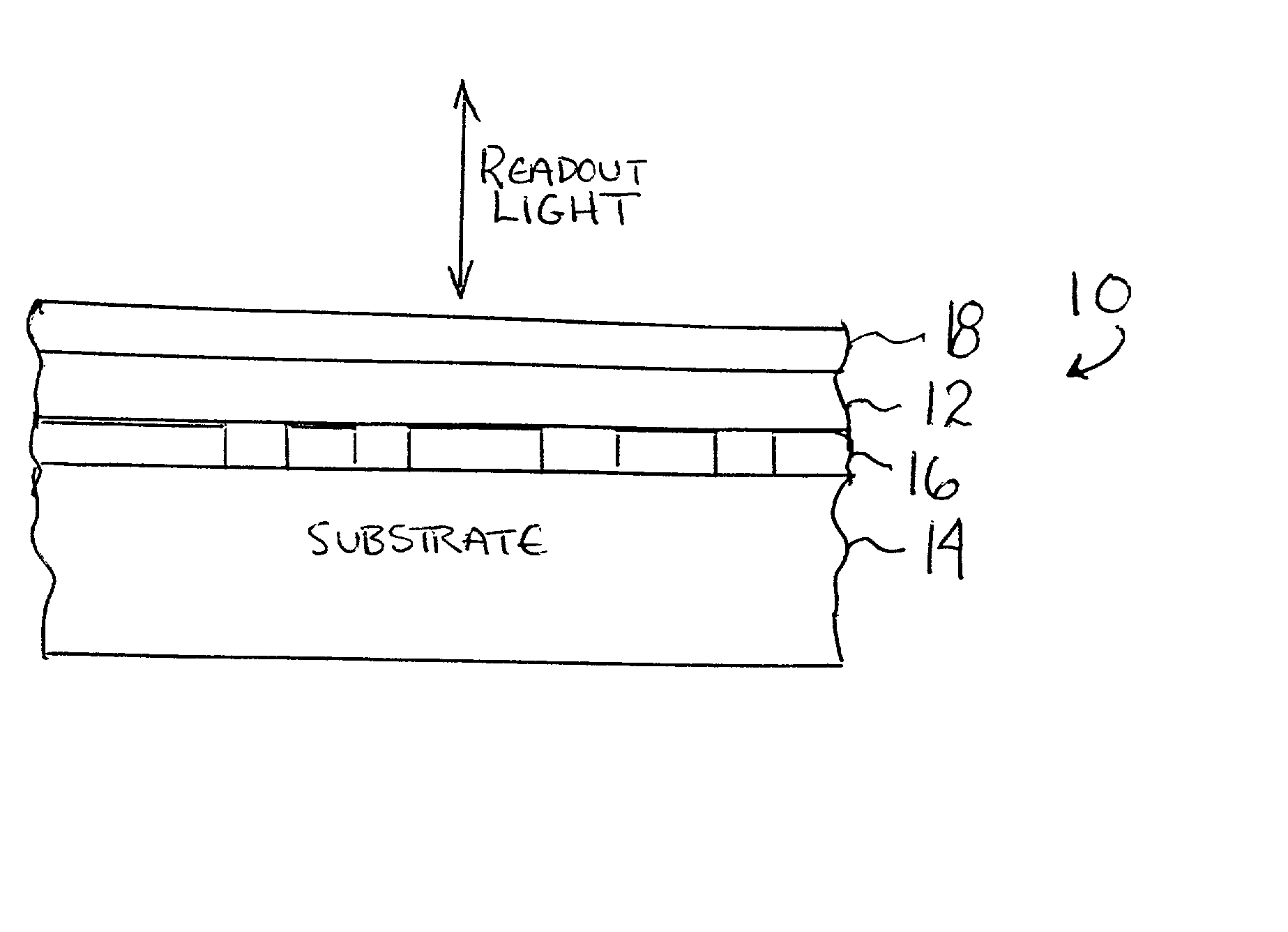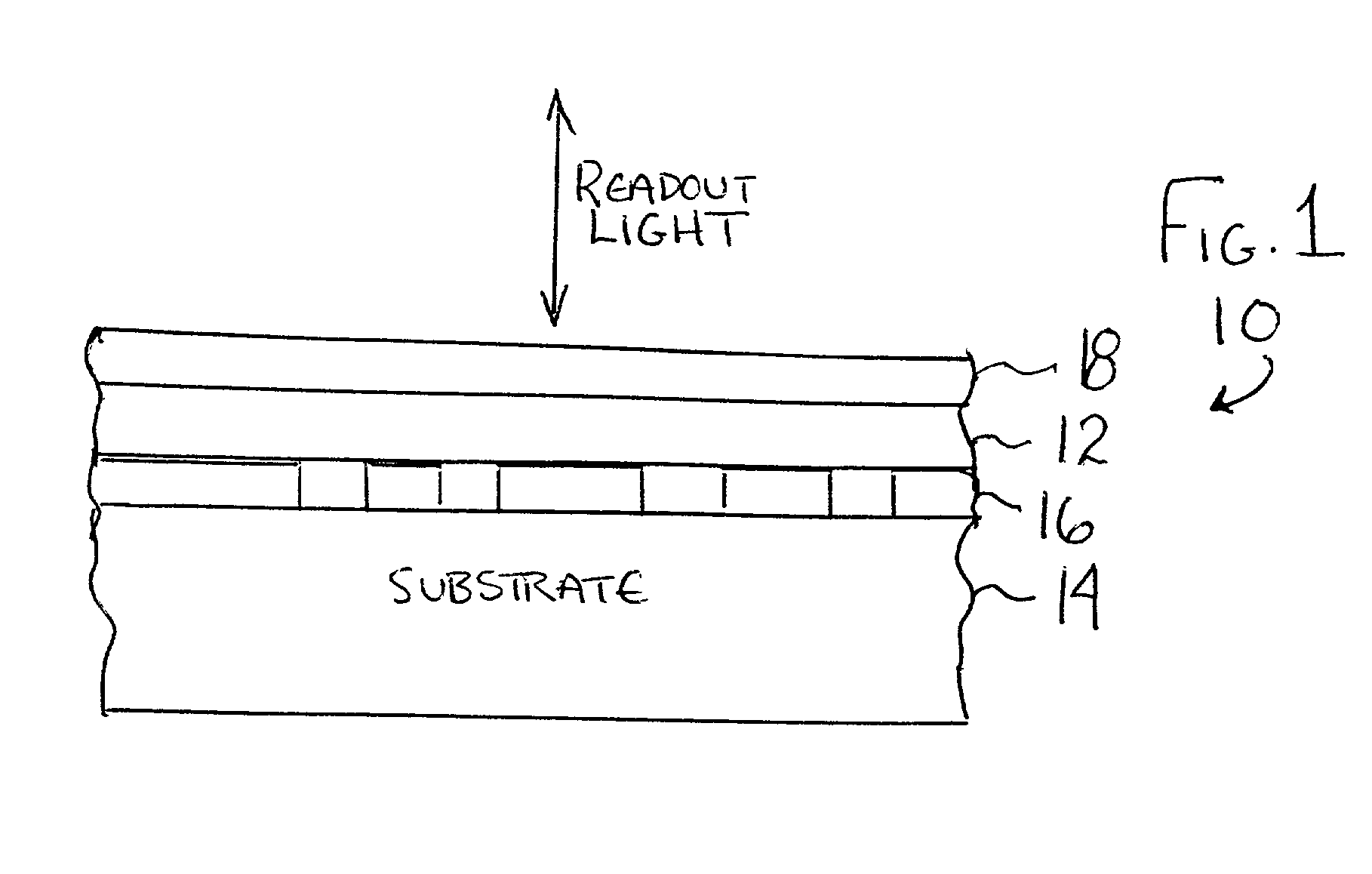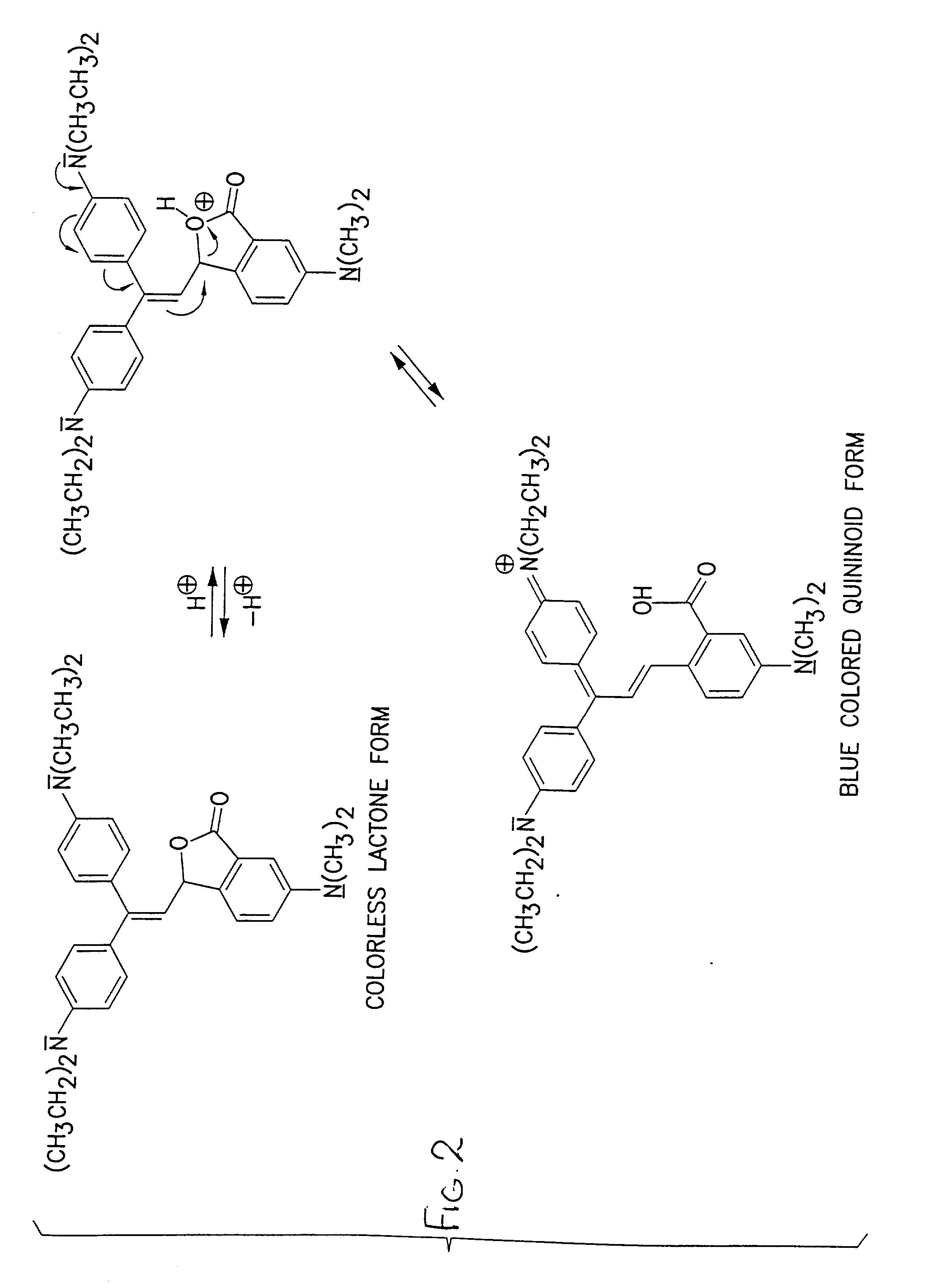Method for rendering surface layer of limited play disk lightfast
- Summary
- Abstract
- Description
- Claims
- Application Information
AI Technical Summary
Benefits of technology
Problems solved by technology
Method used
Image
Examples
example 2
[0040] A solution was prepared of 1 g poly(4-vinylphenol) (MW=8,000) in 10 ml ethanol, 2 ml N,N-dimethylformamide, 200 mg of 3-[2,2-bis(4-diethylami-nophenyl)vinyl]-6-dimethylaminophthalide and 200 mg of benzoyl leucomethylene blue. An optical disc was coated with this formulation to produce a 500-700 nm thick layer that was substantially uncolored. The coating was dried at 60-70.degree. C. for a few minutes, which caused the generation of an intensely blue colored dye corresponding to a limited-play, unreadable state of the disc. However, exposing the coating to sunlight or UV-light did not result in a transformation back to the colorless state, and thus did not defeat the limited-play mechanism.
[0041] While described in the context of a single readout wavelength, it is within the scope of these teachings to render lightfast composite and multi-player (multi-wavelength) readout inhibiting layer or layers 12. Such multi-wavelength layer(s) provide absorption maxima at two or more wa...
PUM
 Login to View More
Login to View More Abstract
Description
Claims
Application Information
 Login to View More
Login to View More - R&D
- Intellectual Property
- Life Sciences
- Materials
- Tech Scout
- Unparalleled Data Quality
- Higher Quality Content
- 60% Fewer Hallucinations
Browse by: Latest US Patents, China's latest patents, Technical Efficacy Thesaurus, Application Domain, Technology Topic, Popular Technical Reports.
© 2025 PatSnap. All rights reserved.Legal|Privacy policy|Modern Slavery Act Transparency Statement|Sitemap|About US| Contact US: help@patsnap.com



